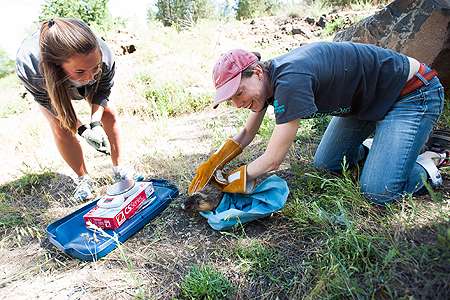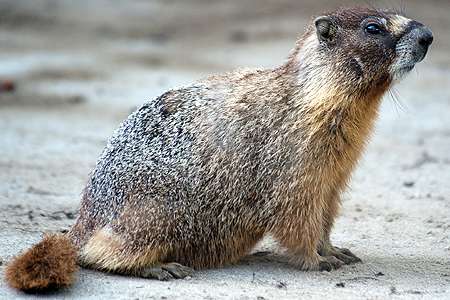Why yellow-bellied marmots thrive in urban setting

Elizabeth Addis, assistant professor of biology at Gonzaga University, and three senior biology majors are spending this summer researching why the local population of yellow-bellied marmots – those gregarious, burrowing rodents ubiquitous near the Spokane River – are not only surviving but thriving in the urban areas of Spokane.
Most research exploring patterns of species survival has focused on birds; little is known about the physiological mechanisms that allow animals to survive in urban environments. The marmots, whose scientific name is Marmota flaviventris, are thriving in their increasingly urbanized environment.
"Eastern Washington is unusual in having these marmots thrive among the cars, the bikes, the dogs and the people," Addis says, adding that the beaver-like creatures are typically found in more remote, mountainous areas. "My work focuses on the physiological processes, particularly those associated with stress, that facilitate the yellow-bellied marmots' existence with us."
The students assisting Addis this summer are Katie Carr, from Pasadena, California, Erin Pazaski, from Sammamish, Washington, and Kristen Price, from Bellevue, Washington. The team has traveled to Palouse Falls, Riverside State Park and along the Centennial Trail near Gonzaga's campus to trap and tag the marmots and collect feces and fur for hormonal samples and dietary information. So far, the team has collected data on more than 50 marmots.

"We are using glucocorticoid metabolites found in fur and feces to determine if yellow-bellied marmots interpret rural or urban environments as more stressful," Addis said. "Additionally, we are examining behavioral variation and dietary differences among marmots along an urban-rural continuum."
The research opportunity is ideal for students like Carr, who aims to pursue a career in research or veterinary medicine.
"We handle live animals almost every day for our research project," said Carr. "We get to be outside in nature every day and learn more about it every second we are in it. It's awe-inspiring!"
Provided by Gonzaga University















